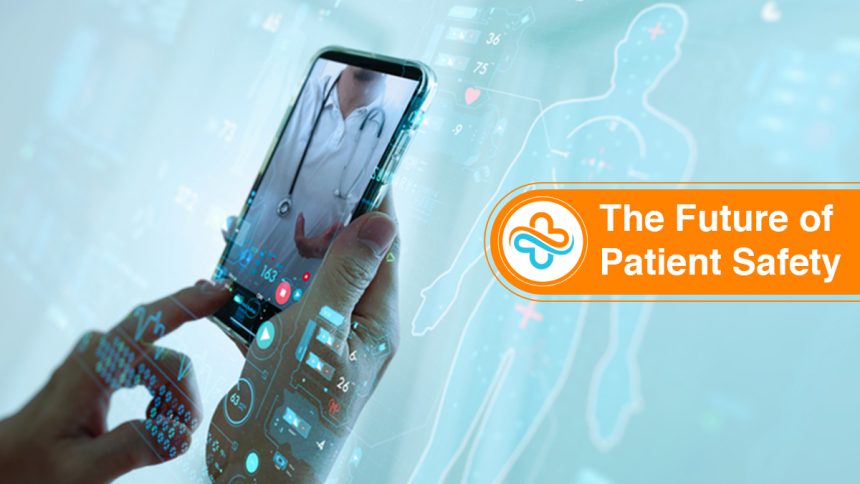The safety of patients is always essential in the current concepts of treatment. Looking to the future, one can assume that the development of new technologies will become the key to improving the safety of the delivery of healthcare services even further. This blog goes over the unbelievable ways AI, robotics, and medical apps are transforming the industry for the better and saving lives. We will also analyze some of the most inspiring initiatives to create a safer patient environment.
Premier Advancements with AI, Robotics, and Others
AI and Its Implication on Patient Safety
AI is gradually finding its way into health facilities as a tool for enhancing safety because it can analyze large data sets and identify these patterns. In this case, AI is advantageous because it estimates the possible issues and some measures that might be taken to avoid them, which saves lives by minimizing the number of medical mistakes. Here are some impressive stats.
Reducing Misdiagnosis: Analyzing the material from the reputable The Lancet, using AI systems in healthcare is 94% effective. 6% in discriminating the conditions from medical scans compared to radiologists’ performance, which was 88%. 9%. This demonstrates how, with the use of artificial intelligence, having the correct diagnosis at the right time is possible, and this could mean the difference between life and death. Source: The Lancet
Predicting Patient Outcomes: What cannot be denied is that the use of AI-powered predictive tools is a matter of true innovation. For instance, MIT’s computer science and artificial intelligence department designed a CSAIL model that forecasted the deterioration of patients up to 24 hours before with a 0.89 accuracy rate so that appropriate measures could be taken. Source: MIT CSAIL
Robotics: Transforming Surgical Precision
Another exciting concept that is progressing in the health industry to enhance patient outcomes is robotic surgery. Another advantage is that some surgeries are done accurately through robotics, avoiding the surgeon’s handiwork. The benefits are clear:
Minimally Invasive Surgery: The da Vinci Surgical System, among the most popular robotic technologies, has performed at least 6 million operations to date. A study conducted on patients in the JAMA Surgery showed that those who underwent robotic surgery had 52% fewer complications than the conventional approaches. Source: JAMA Surgery
Training the Future: Robotics also enhances surgical education among students. In VR/AR, real-life surgery situations that may be encountered are mimicked, and thus the surgeons are well-trained. Many organizations are implementing this technique, with Stanford Medicine training its personnel in VR/AR. Source: Stanford Medicine
Medical Apps: Empowering Patients
Mobile medical applications are revolutionizing healthcare through solutions in patient monitoring and communication and motivation towards better healthcare practices. Their impact is significant:
Improving Medication Compliance: Medical apps will alert patients when their medication is due so they can take it on time, generate medical reports and scan medications. The Journal of Medical Internet Research also showed that medical apps cut out missed doses by as much as 47 percent. Source: Journal of Medical Internet Research
Telemedicine’s Rise: Many uses of telemedicine apps were adopted much earlier, though the COVID-19 pandemic accelerated the process. From the AMA’s statistics, it is more apparent that telehealth visits are expected to stand at 404 million by 2024 to increase care and avert crises from happening. Source: AMA
Visionary projects are leading the way
Project Nightingale: Google Health’s ambitious project, code-named Project Nightingale, is to establish a master database of health information that can be safely codified and analyzed. They work to offer AI and machine learning patient-centered care, ensuring that all appropriate data is accessible for healthcare givers. Source: Google Health
Precision Medicine Initiative: Financed by the National Institutes of Health (NIH), this line of treatment applies precise therapies based on genetic makeup and patients’ lifestyle and environment. The “All of Us” Research Program collects genetic data from people of all backgrounds to create better care for each patient and avoid being allergic to medications. Source: Source: National Institutes of Health
Augmented reality enhanced emergency response: The cross reference conducted by the Johns Hopkins University researchers aims to determine how AR can be applied in emergency medicine. They envision that by offering the paramedics the requisite patient details using the AR glasses, they will be able to enhance the speed of handling emergency cases, thus providing better results. Source: Johns Hopkins University
In Conclusion, using new technologies like Artificial Intelligence, Robotics, and medical apps in healthcare shows a bright future for patient safety. These advanced tools, along with new projects, are changing how we take care of patients. We can expect a safer and healthier world as we keep using these innovations in our healthcare systems. Adopting these changes will lead to better care and improved health for everyone.


Leave a Reply